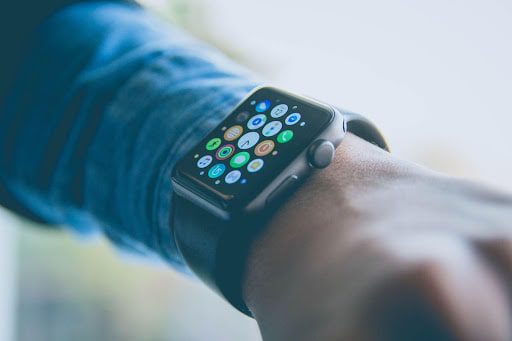Most people think personal safety, and then think self-defense classes or carrying pepper spray. But there are other, less traditional methods of keeping yourself safe, and personal safety devices are one such option.
Wearable safety devices come in all shapes and sizes, from pendants that double as personal alarms to bracelets that send out an emergency signal if you’re in trouble. They range in price from a few dollars to several hundred dollars, and some even offer GPS tracking so you can be located if you get lost or into trouble.
So what are wearable safety devices, and how do they work? Read on to find out.
What Is a Personal Safety Device?
Portable safety devices are small, discreet gadgets that you wear on your body to help keep you safe. They typically include a panic button that you can press in an emergency and features like GPS tracking and two-way communication. This allows you to keep in touch with friends or family members if you need help and will enable them to track your location if you’re in danger.
Most wearable personal alarm devices also come equipped with fall detection technology. So if you fall and find yourself unable to get up, the device will automatically send an alert to your emergency contacts, informing them you’re in an emergency and need help. And some will alert emergency services for you as well. This can be lifesaving for seniors or people with mobility issues who might not be able to get up on their own.
When it comes to safety and security, we all have different needs. For some, the fear of being physically assaulted or mugged is a daily concern. For others, it’s the worry about our loved ones’ safety when we’re not around. No matter what your safety concerns are, safety devices can help ease your mind.
Photo by Josue Isai Ramos Figueroa on Unsplash
How Do Safety Devices Work?
Most personal alarm devices work by sending out an emergency signal to your emergency contacts if you press the panic button. Depending on the device, this signal can be a text message, email, or even a phone call. The alert will also include your current location through GPS so that your emergency contacts and emergency services can find you in emergency situations.
Some devices come equipped with two-way communication. This means you can press the panic button and immediately start talking to one of your emergency contacts through the device. This is perfect for situations where you might not be able to speak, such as if you’re actively being held against your will or are in danger of being overheard.
Other devices detect if you’ve fallen automatically and can’t get up. If the device’s programming detects a fall, it will send an alert to your contacts along with your GPS location. This is perfect for seniors or people with mobility issues who might not be able to get up on their own.
Most wearable personal alarm devices use a combination of GPS and cellular technology to send out emergency signals. This means they’ll work even if you’re in an area with no cell phone service.
But what sets the best of these devices apart is their level of AI-supported call handling. This means that the device can provide context about the situation and the fastest response times in the market. Plus, it allows for proactive engagement that shifts can initiate in behavioral patterns. This can include automated check-ins or even just sending a notification if everything seems normal.
Who Should Use a Portable Personal Safety Alarm?
Wearable personal alarm devices are becoming increasingly popular, but who should use them? The simple answer is that anyone who feels unsafe or vulnerable in everyday life can benefit from wearing one of these devices.
This includes people who work late shifts, walk or jog alone, or live in an unsafe neighborhood. In addition, wearable safety devices can benefit people with medical conditions that make them more vulnerable to attacks, such as dementia or autism.
While personal safety alarms are often thought of as something that police officers or security guards only need, the truth is that anyone can benefit from wearing one. Whether working late at night or walking alone in an unfamiliar neighborhood, a personal alarm device can give you a sense of assurance and peace of mind knowing that help is always nearby.
In addition, many personal safety alarms now come equipped with features like GPS tracking and two-way audio, which can be invaluable in an emergency. As a result, there is no reason not to consider investing in a safety device. Whether you choose a simple panic button or a more sophisticated wearable device, it could be your best decision.
If you think you think a safety device is right for you, be sure to do your research to find the best fit for your needs. With so many different devices on the market, one is sure to be perfect for you.
Photo by Ümit Yıldırım on Unsplash
The Benefits of Using a Personal Safety Device
In today’s world, individual safety is more important than ever. And while there are many measures you can take to protect yourself, one of the most effective is to wear a personal safety alarm. Here are just a few of the benefits you’ll enjoy by using a safety device:
1. You’ll feel safer when walking or jogging alone. Knowing that you can instantly summon help if needed will give you a greater sense of confidence and security.
2. You’ll get help quickly in an emergency. With the touch of a button, you can immediately connect with trained professionals who can assist.
3. You’ll receive proactive engagement that can shift behavioral patterns. Many safety devices offer real-time alerts and two-way audio that allow authorities to quickly identify and respond to potential threats.
4. Your device will work even without cell phone service. Since most safety devices use GPS technology, you’ll still be able to get help even if you’re in a remote location or your phone has no signal.
In addition to these standard benefits, you’ll also enjoy emotional benefits like peace of mind, reduced anxiety, and increased confidence. So if you’re looking for a practical option to improve your safety, consider wearing a safety device. It could be the most important technological decision you ever make.
How to Choose a Personal Safety Device
There are a few fundamental points to remember when choosing a wearable safety alarm. First, think about what your specific safety concerns are. Do you worry about being mugged or assaulted? Do you have a loved one with Alzheimer’s or dementia who might wander off and get lost?
Once you know your safety concerns, you can start narrowing down your options. Some devices are designed for specific needs, like the needs of seniors, and others are specific for people who are worried about being kidnapped or held against their will. And then some options are broader in their potential, offering something for everyone.
You should also consider how you want to be contacted in an emergency. Some devices only send out a text message or email, while others offer two-way communication so you can talk to your emergency contacts through the device.
Finally, think about your budget. Wearable safety devices can range in price from around $30 to $200. Keep in mind that more expensive devices tend to have more features, like two-way communication or fall detection.
The most important thing is to choose a device that makes you feel safe and secure. Regarding your safety, there is no such thing as being too careful.
These devices are designed to provide discrete protection for individuals in various situations. They can include panic buttons, apps with two-way communication, geolocation, and fall detection. And many of them are pre-integrated with professional monitoring centers with highly trained teams available 24/7 to connect with emergency dispatch.
This makes wearable safety devices a valuable addition to any safety plan. And with so many options on the market, there’s sure to be one perfect for your needs.
Tips for Using Your Safety Device Safely
If you have chosen to invest in a safety device, congratulations! You have taken an essential step in protecting yourself and your loved ones. However, it is crucial to remember that these devices are only effective if used properly. Here are some tips for getting the most out of your wearable personal safety device:
- Make sure the device is easily accessible. If you have to fumble around in your purse or pockets to find it, you may not have time to use it in an emergency.
- Test the device regularly. Most devices have a test button that will allow you to test the alarm. Make sure the alarm is loud enough to startle an attacker and attract attention from nearby people.
- Carry the device with you at all times. This may seem obvious advice, but many people forget to bring their safety devices with them when they go out. If you can’t carry it on your person, keep it close by in a bag or purse.
By following these simple tips, you can help ensure that you can use your safety device effectively in an emergency.
Worried About Your Personal Protection?
With a safety device, you can feel safe and secure no matter where you are. These devices provide peace of mind in uncertain times and can help you feel more confident when out alone or in unfamiliar situations.
Help keep news FREE for our readers
Supporting your local community newspaper/online news outlet is crucial now more than ever. If you believe in independent journalism, then consider making a valuable contribution by making a one-time or monthly donation. We operate in rural areas where providing unbiased news can be challenging. Read More About Supporting The West Wales Chronicle























